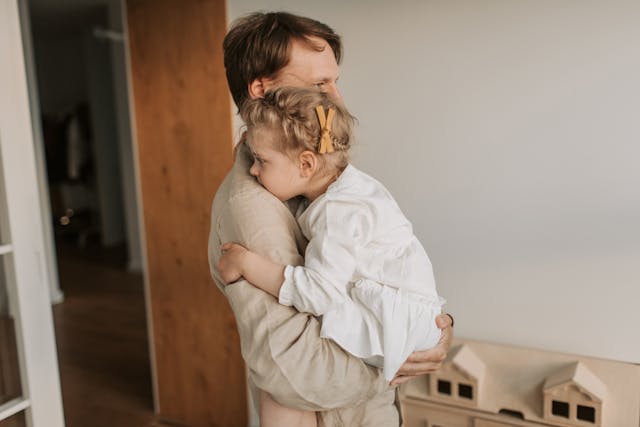Separation anxiety is a natural part of growing up for many children. It often starts around six months of age and can peak during toddler years. While it’s normal for children to feel uneasy when separated from their parents or caregivers, persistent or intense anxiety can be challenging for both the child and the family. This guide explains what separation anxiety is, how to recognize it, and practical ways parents can help their children navigate this emotional phase. Understanding Separation Anxiety Separation anxiety happens when children fear being apart from their primary caregiver. It’s an instinctive reaction rooted in their attachment system—a survival mechanism that helps babies stay close to their source of safety. While it’s most common in younger children, older kids can experience separation anxiety too, especially during times of change or stress. Signs of Separation Anxiety Recognizing the signs of separation anxiety can help you better support your child. Common behaviors include: While some anxiety is typical, extreme behaviors that persist for weeks may indicate a deeper issue, such as Separation Anxiety Disorder. Why Do Children Experience Separation Anxiety? Several factors contribute to separation anxiety, including: How to Help Your Child with Separation Anxiety While separation anxiety can feel overwhelming, there are many ways to support your child: 1. Establish a Routine Children thrive on predictability. Set clear, consistent routines for drop-offs and pick-ups so they know what to expect. 2. Start Small and Build Up Begin with short separations and gradually increase the time apart. This helps your child build trust and confidence that you’ll always return. 3. Create a Goodbye Ritual A simple, predictable goodbye routine can be comforting. It signals to your child that it’s time to part ways, but in a positive and reassuring manner. 4. Encourage Independence Foster self-reliance by encouraging your child to play, explore, and make small decisions on their own. 5. Use Comfort Items Give your child a transitional object, like a favorite stuffed animal or blanket, to provide a sense of security when you’re apart. 6. Stay Calm and Confident Children take emotional cues from their parents. If you appear nervous or hesitant, your child’s anxiety may increase. Stay calm, smile, and reassure them that they’ll be fine. 7. Practice Separation at Home Introduce short, low-pressure separations during playtime at home. For example, step out to another room briefly and return with a cheerful “I’m back!” 8. Communicate with Caregivers Work with teachers, daycare providers, or babysitters to develop strategies for easing transitions. Share what works at home and ask for updates on your child’s progress. 9. Avoid Sneaking Away While it may seem easier to slip out unnoticed, sneaking away can break your child’s trust and make future separations harder. Always say goodbye before leaving. 10. Be Patient Remember, overcoming separation anxiety takes time. Celebrate small victories and offer plenty of praise when your child handles a separation well. What to Avoid Certain actions can unintentionally worsen separation anxiety. Avoid the following: When to Seek Professional Help While most cases of separation anxiety resolve with time and support, some children may need additional help. Consider consulting a pediatrician or child psychologist if: A professional can provide tailored strategies, therapy, or other resources to help your child manage their anxiety effectively. Preventing Separation Anxiety Preventive measures can reduce the intensity of separation anxiety: Conclusion Separation anxiety is a normal part of childhood, but it can be challenging for both children and parents. By understanding its causes, recognizing the signs, and using practical strategies to ease their fears, you can help your child navigate this phase successfully. With your guidance, your child will gradually gain the confidence and independence they need to thrive in new situations. Patience, consistency, and a lot of love will make all the difference.

